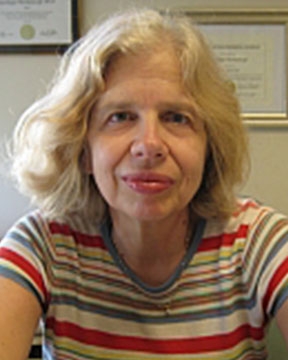



















 |
Xanthippi MarkenscoffUniversity of California, San DiegoThe Mechanics Of Deep Earthquakes: Symmetry Breaking Vayenas International Symposium on Physical Chemistry and its applications for sustainable development[Particles and Gravity] Back to Plenary Lectures » |
Abstract:A model is presented for the mechanics of deep earthquakes occurring at 400-700 kms under the surface of the earth where pressures are as high as a million atmospheres. This has been considered a mystery in geophysics. The model is based on the dynamic Eshelby inclusion problem, which is a self-similarly expanding ellipsoidal region with phase change (change in density and/or change in moduli) under prestress. In self-similar expansion, the Cauchy-Kowalewski theorem dictates zero particle velocity in the interior domain while Noether’s theorem dictates that the self-similar shape shall be one that extremizes (minimizes for stability) the energy rate required to move the phase boundary of discontinuity (dynamic J integral). This is done with the expression allowing the possibility of symmetry breaking, and with the region of phase change assuming a planar disk shape (”pancake”) (consistent with observations in nature). Due to this symmetry breaking, the 3D change of density propagating planarly induces unequal eigenstrains in the disk that may be misinterpreted as anisotropy in the moment tensor (Markenscoff, 2019). Moreover, due to the change of density squeezed to propagate planarly, the induced unequal eigenstrains (yielding deviatoric components) produce compensated linear vector dipoles (CLVDs) from which follows a second symmetry. This breaks an otherwise isotropic medium with change in density in which the direction of max shear (double couple DC) makes an angle with the direction of the region of change in density (CLVD) (Markenscoff and Jeanloz, in preparation). The angle depends on the change in density and Poisson’s ratio which will allow the estimation of the source magnitude from the far field data. It should be noted that following Knopoff and Randall (1970), the DC and CLVD are taken in seismology to have parallel axes. Thus, the seismological measurements’ interpretation will need to be reconsidered in view of the angle between DC and CLDV radiations. References:X.Markenscoff “Self-similarly expanding regions of phase change yield cavitational instabilities and model deep earthquakes, J. Mech. Phys. Sol, 127, 167-181 (2019) |
|